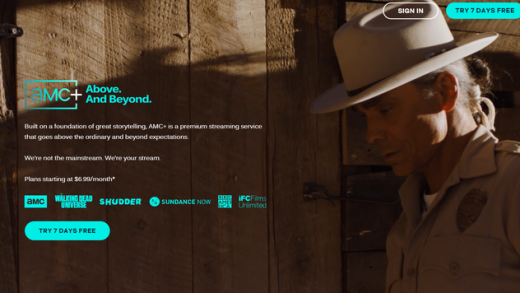As a sophomore in college, I was on Tumblr every minute that I wasn’t in class or watching YouTube. And as a fan of One Direction, I couldn’t avoid the platform’s No. 1 ship of 2015: Larry Stylinson, the pairing of band members Harry Styles and Louis Tomlinson. Larry supporters scoured videos of the group for “evidence” of their romance — a lingering gaze, a gentle brush of an arm — and transformed those moments into GIFs that were reblogged tens of thousands of times.
At first, I found the conviction of Larry truthers fascinating. And then something strange happened: I began to believe in Larry, too.
Larry content was everywhere, blooming across photo edits, blog posts, fan art, and fanfiction. However, it was the GIFs that did me in. They re-framed a fleeting moment as significant, as romantic, then suspended it in time. Scholars Dr. Dominik Maeder and Dr. Daniela Wentz have written that in a GIF’s “infinite loops of human and animal gesture… meaning eventually surfaces.” For me, and for many Larry shippers, that was true. Styles and Tomlinson denied the romance, but the hypnotic carousel of their small, silent moments made it feel completely possible, maybe even real.
Kayla, who now works as a social media consultant in the entertainment industry and requested we change her name to maintain her anonymity, used to make shipping edits of Arrow‘s Olicity (Oliver and Felicity) and The Old Guard‘s Joe and Nicky. GIFs were her way of showing others something she saw that they might not have picked up on. “When you slow these things down, you’re noticing smaller moments that you didn’t see live, that you wouldn’t see otherwise,” she explains. “That’s really special when you’re talking about romanticizing these couples and their chemistry. It increases the investment of fans in that relationship because they can see it in a new way.” Fans share those interpretations through creative edits, sometimes leveling up a romance to be on par with a Disney love story or the fiery passion of The Notebook‘s Allie and Noah or the tragedy of Titanic.
[GIFs] re-framed a fleeting moment as significant, as romantic, then suspended it in time.
During her time on Tumblr from 2014 to 2018, Kayla mostly posted sets: collections of GIFs or photos that capture shorter frames of a larger moment, like storyboards. Sets were native to Tumblr, and have now been co-opted by fans on Twitter. “With GIF sets you break the moment down a lot more to see the evolution of it in a way that encapsulates almost all of the emotion or all the chemistry.” They can also capture dialogue exchanges that are too long for a single GIF. “Sets to me are a little bit more emotional, a little bit more palpable,” she says “and I think really tugged at the heartstrings of the moment more than a single GIF would.”
In a 2013 interview, Tumblr’s founder and then-CEO David Karp called this kind of GIF editing and remixing “a really clear example” of a way that Tumblr gave creators “room to do something that they couldn’t really do anywhere else.” In contrast to nascent social platforms of the day, which he said had “gotten more and more restricted — [with] square photos, 140 characters, six-second videos,” Tumblr gave creativity a “place to flourish. We didn’t want to define the medium,” he says, “we wanted to leave it wide open.”
According to researchers Kate M. Miltner and Tim Highfield, the GIF is “an ideal tool for enhancing” what they call “the performance of affect” or the way we process and react to experiences. Basically, GIFs are like stand-ins for our own experiences, allowing us to analyze, replay, and potentially portray the actions they depict.
This is especially significant for queer communities on Tumblr. Other academics suggest that while sharing GIFs are the “smallest and most innocuous of Tumblr practices,” for LGBTQ users specifically, GIFs are a way to “trade in affect across the site.”
“Millennials kind of paved the way for queerness on the internet, and a lot of it happened through Tumblr,” says Amanda Brennan, who dug into the data behind Tumblr’s fandoms over her seven years at the company. “The way that we talk about gender and sexuality now wouldn’t be here if Tumblr hadn’t laid that path. It’s a space where you could be yourself and support each other, and the queer community is the cornerstone.” And GIFs can be a vehicle for discovery in the same way that “we use memes as a way to talk about things that we may or may not want to be vulnerable about,” she says.
That visibility helps queer users see themselves in stories historically centered on heterosexual relationships, and celebrate their identity.
Brennan points to data from 2013 showing that more than 76 percent of the most reblogged ships on Tumblr were slash, or same-sex pairings. That visibility helps queer users see themselves in stories historically centered on heterosexual relationships, and celebrate their identity. It’s important “to be able to see these queer relationships and queer joy when you’re just trying to figure yourself out,” to be able to say, “‘I see the way this person looks at this person. And I know that feeling and I’m going to dive into it because it brings me joy.'”
GIFs capture these ephemeral moments in a way that is immense and interminable. A GIF lives on in perpetuity, as eternal as love itself. Brennan points to one of her favorite femslash ships: Waverly Earp and Nicole Haught (Wayhaught) of Wynonna Earp. “I love seeing love, wherever it is,” she gushes, “Like, fuck yeah, I want to look at every GIF of the way that Nicole gives Waverly heart eyes.”










